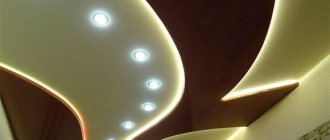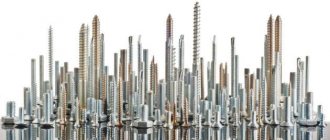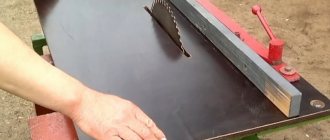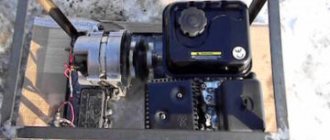A boat made from pipes can be made with your own hands at minimal cost and in a fairly short period of time. The finished watercraft can be used for walking in natural bodies of water, fishing, and so on. How to make a boat yourself? What materials will be required to build the structure? The answers follow.
Homemade boat from plastic pipes
Polypropylene is the optimal material for building a homemade boat
A sheet material currently widely used for the manufacture of swimming pools and various containers, polypropylene is excellent for making a vessel.
According to some characteristics, a boat made of plastic is in no way inferior to a real boat made of aluminum or fiberglass, and may even surpass it. Making a boat that is comfortable for two people will take only 1-2 weeks and you will have at your disposal a full-fledged vessel for fishing or riding.
The advantages of polypropylene, and, accordingly, of a floating device made on its basis, are:
- 100% waterproof;
- zero adhesion;
- resistance to mechanical damage and various types of influences;
- ease of repair;
- the ability to maintain the original appearance for a long time;
- resistance to ultraviolet radiation and to any climatic conditions;
- light weight of the finished product, which is convenient for transportation;
- excellent frost resistance, which simplifies the issue of storing a floating device;
The flexible material very gently absorbs shock and noise, which reduces any instability to a minimum, and therefore guarantees safe movement through water.
Urgent delivery of indestructible boats to any place in Russia
Any configuration as desired
customer
Little time left:
Years of impeccable work on the Russian market
boats sold last month
Download our price list
Tools and materials
Now more about the independent production of a boat:
- polypropylene sheets 5 mm thick - a total of 8 square meters; The cost of 2 sheets of PP measuring 2x4 meters will be 15,700 rubles.
- electric jigsaw;
- screwdriver;
- milling tool or electric planer;
- extruder or hair dryer with the necessary attachments; Considering that the tool is quite expensive, it can be rented. The cost is approximately 3000 - 5000 rubles. per day.
- welding rod; The cost of a reel of 400 meters and weighing 5 kg will be 1800 rubles.
- silicone sealant;
- polyurethane foam for filling voids, if provided for in the design in the drawings;
- connecting bolts;
- boards in the amount of 3 pieces.
You can buy polypropylene in our catalog by leaving a request to the manager.
Rubber dinghy
The answer to the question: how to make a boat with your own hands, drawings will be the first answer. Thanks to them, the product will turn out to be the correct shape. Therefore, the first thing you should do is draw drawings, calculating the smallest details.
After this, we cut out a boat of the specified dimensions from a sheet of plywood. Additionally, we will need boards to securely fasten the bottom and a tarpaulin for covering. These materials must be connected to each other using the same glue and resin. Be sure to give the glue time to set, otherwise the structure will turn out flimsy. And your efforts will be wasted.
After this, cover the product with a tarpaulin, tightly attaching it to the boards. Remember, the design must be wide. This way you will get a homemade boat. It will not be very similar to the rubber one that is sold, but it will provide you with softness and comfort.
For a better understanding of the manufacturing process, you can see how to make a PVC boat with your own hands. There they will explain the principle of operation using a clear example. After all, reading and seeing an example, repeating actions, are completely different things.
But to be effective, it’s worth reading the detailed description and watching the video tutorial. This way you can quickly understand how to make a rubber boat correctly, which can serve for many years.
Brief instructions
- We make a detailed drawing indicating all parts of the product and dimensions.
- We transfer the dimensions of the boat parts in real form onto polypropylene sheets.
- We cut using a cutter or jigsaw, being careful, since at the beginning of cutting and at the end the tool can slip and cut through the material.
- At the junction of the individual parts we make a edging.
- We weld places where sealed joints are needed
- We fasten the necessary parts with bolts, stepping back from the edge by 10-15 mm.
- We install wooden seats, a transom for the motor, if necessary, and mounts for oars.
| For one traveler or fisherman, a homemade vessel can be made smaller |
Useful tips and tricks
- Some parts of the product can be connected not by bolts, but by welding, but in this case, repairing damaged areas will become impossible.
- It is not recommended to use even strong glue for fastening - there is a high probability of boat seams leaking.
- Drawings or diagrams of a polypropylene boat must be detailed, indicating the dimensions of parts of the bottom, sides and connecting points.
- Cut polypropylene sheets can be easily bent and reshaped without deformation.
- For the edging, it is advisable to cut recesses along the entire length of 3-4 mm.
- To use the motor upon completion of the work, you need to make a special transom out of wood.
Production process
To make a regular boat from large-diameter HDPE pipes or other types of pipes, you need:
- make a boat frame;
- sheathe the pipe frame with any waterproof material;
- make your own from pipes and plastic or buy oars.
- make and install a keel for the boat, facilitating the steering process;
- make a cart for transporting watercraft. A boat trolley made of pipes is made in accordance with its overall dimensions.
Means of transportation
Frame assembly
To make a frame from sewer pipes, at the first stage you will need to develop a drawing of the future structure. The shape and dimensions are not of fundamental importance, therefore they can be determined by the user independently, based on the level of comfort during use.
The boat can be equipped with one or more seats. To give the structure additional strength and stability, it is more advisable to equip the bottom with a rigid base, for example, a wooden flooring, fastened with clamps (ties).
When assembling the frame you can use:
- welding method, characterized by a large margin of strength and tightness;
- duct tape. The least durable design, characterized by speed of production.
Boat base
After the frame is completely assembled, you can begin installing the seats. You can also make your own boat seat from PVC pipes. Most often used:
- chair seats;
- wooden boards;
- metal plates.
Sheathing
To cover the frame you can use:
- tarpaulin. The material is more durable and durable, but also more expensive;
- transparent polyethylene film. The material is less durable, but the finished boat looks more original.
To fasten the selected cladding material, the following are used:
- adhesive tape;
- plastic clips;
- plastic rings.
Boat ready for use
You can build other designs of homemade boats, which will be based on pipes. It all depends on the builder’s imagination and his ability to work with these materials.
Drawings of boats made of PVC pipes
The easiest way to get a drawing of a homemade boat from PVC pipes is to use a 3D editor. So, for example, for AutoCAD there are special libraries with plastic pipes, fittings and fasteners. Using it you can get a drawing of almost any homemade boat made from PVC pipes. The second type of homemade boats made from PVC pipes is made using large diameter pipes. Here is a video of testing such a homemade boat
Here you will have to approach production with great labor costs. The video below shows the process of making such a boat in a garage.
To connect PVC pipes, you will have to purchase a special extruder or make it yourself. However, making such a boat is only half the time. The second part of your time will be spent on equipping a homemade PVC boat made from pipes with fittings, as well as installing a transom and seats.
It's worth talking about the price. The cost of making a homemade boat from large-diameter PVC pipes with your own hands greatly depends on the size. So, for example, a homemade boat 2.5 meters long will cost 5 – 7 thousand rubles. And for a boat 5 meters long it will cost from 8 to 9 thousand rubles, while in the store, the cost for boats of a similar size with a hard bottom starts from 38 thousand for a 2.5 meter and from 50 thousand for a 5 meter.
As you can see, the economics of making a homemade boat from PVC pipes are very justified.
Keel
The keel is needed to make the boat more stable on the water. It is absolutely impossible to do without it if you plan to install an engine on a boat. It will also be useful in situations where nearby bodies of water are turbulent - fast currents, strong waves, etc.
To make the keel, you can use plastic profiles for double-glazed windows. It needs to be wrapped with foam rubber. After this, you need to wrap the structure with packing tape in several layers. This will make the structure insulated and waterproof, as well as safe for health and reliable.
In some cases, you can resort to using a wooden keel, but constructing one is a more labor-intensive process. Start making a boat from the keel, because this will help you get used to the material and get used to this kind of work.
Thanks to this, you will not make mistakes at other, more important and costly stages.
Frame
To make the frame, you need to cut suitable plastic pipes. They must be thick and long enough to give the boat frame the required shape. During the work, some of the pipes will have to be bent, which should also be taken into account when choosing their length and thickness. You need to connect the pipes together using a soldering iron for plastic. Working with a soldering iron is not too difficult and is accessible even to those who have never done this before.
In some cases, alternative fastening methods are used. For example, you can connect pipes with pins. These are usually less reliable and more labor-intensive methods.
Cart
It is easiest to make a cart for transporting a boat. For this you can use wooden boards or metal sheets. The wheels can be either some purchased ones or old bicycle ones. Bicycle wheels are the easiest to find - there are cheap wheel assemblies with tires thick enough for our needs.
Awning
Tarpaulin or PVC fabric is used as an awning; you need to choose it depending on your budget and needs (for winter fishing or fishing during the rainy season).
It is not difficult to build an awning - just stretch our fabric and secure its ends with guy ropes, which we insert into the corners of the boat.
Frame
The boat frame made of PVC pipe is the basis of the basics. The integrity of the structure will depend on its strength. You can learn how to build a frame correctly in the videos provided.
If you approach this issue irresponsibly, the constructed structure will fall apart the first time you try to launch it into the open water.
After detailed development and verification of the drawing, practical work on creating the frame can begin. You can secure the frame using the methods already suggested above, or you can use a soldering iron for plastic products.
Working with such tools is not difficult. Even a person who has no experience in this field can cope with these works. Soldering irons come with instructions that describe the entire procedure in detail.
It is not recommended to buy this tool for a one-time job to weld a frame, justifying it as economically unprofitable.
It is better to use a rented device to attach a frame made of plastic pipes. This service is offered by stores that sell soldering irons.
A frame made from blanks soldered with a soldering iron will last a long time. In this case, each joint of the frame will be highly durable. This way you can make a very durable structure with your own hands.
If any difficulties arise during work, video materials will help you solve the problem of how to properly make a frame from PVC pipes.
Other elements
In general, at this stage the boat will be ready. All that remains is to complete the less important parts and make structural improvements. First, you need to make the required number of benches (cans). It also helps to have plastic bottles on the sides of the boat, which will help make the structure more stable. Some people will need mounts for motors or fish finders. For convenience, you can make small waterproof boxes that will protect important things while fishing. Sometimes you need oar stops. You can also sew pockets to the boat.
You can go even further and equip the boat with decorative elements to make it unique.
Making the keel
A homemade keel for a boat from a plastic pipe is easy to do. All the material that goes into work is durable, light weight and low cost. This keel is ideal for a punt.
For production, a four-part plastic profile is taken, which is used in assembling windows and window sills. It is covered with two foam rubber sleeves, which are used to insulate pipe materials.
Next, the keel is wrapped in packaging film, which is laid in several layers. In the areas where the keel is attached, wide tape is wound.
For convenience, the keel is cut in half and, when connected, a PVC pipe (approximately 0.5 m in size) is inserted into the middle of the tetrahedron.
A keel made of such materials does not get wet, does not emit toxic substances, and is not destroyed by exposure to the rays of the sun.
You can also make a homemade floor (slan) for flat-bottomed boat structures. For work you will need four boards, approximately 0.9 cm thick.
The width of all pieces should be equal to the distance from the side parts of the structure. All these pieces are held together with tightening plastic clamps.
Catamaran project
There are real projects available that can be implemented in a small apartment, using only hand tools, ensuring high mobility of the product (no parts longer than one and a half meters - can be transported for free in any public transport and on an airplane), its low weight, ease of assembly and disassembly designs, the necessary strength and reliability.
So, if you have finally decided to make a collapsible sailing type, then you should look in the specialized literature for drawings of sailing catamarans that correspond to your choice. Believe me, it's not that difficult.
Let's consider a sailing catamaran based on two inflatable rubberized bags, which when inflated form two “cigars” with a diameter of 40 cm and a length of 280 cm, weighing 12 kg with sails and oars, which can easily support four crew members, providing them with sufficient comfort for work and rest and fishing. Each crew member accounts for only 3 kg of boat weight, and the ship’s unsinkability, convenience and excellent navigability have been tested in practice by dozens of short and long trips along the rivers and lakes of the central part of European Russia. These trips have shown that a catamaran design based on bag-type floats, which easily change their shape, overcomes obstacles and shallows much more safely, where kayak-type structures based on a rigid frame often damage the rubberized fabric, forcing repairs in the field.
Wooden base
For many centuries, people have used wood as a means of transportation on the water surface. At first these were simple structures in the form of small platforms, later a boat appeared, the production of which took a long time.
After all, it must be of high quality for the safe transportation of cargo. Nowadays, if desired, anyone can reproduce the remedy at home.
A simple step-by-step plan will teach you how to make a wooden boat. It is necessary to prepare in advance long, wide boards that will serve as the sides of the shuttle. They must be dry, smooth, and free of cracks.
After preparing the base material, it needs to be processed for easy fastening. The edges of the boards must be cut evenly so that when assembled, the boards touch each other tightly. Next, we begin to make a vehicle. You need to start from the bow. We cut out an additional board that will hold the sides in the middle.
After finishing work on the sides, you need to build seats. The process is very simple, so it won't take much time. Wooden boards must be nailed to the sides. After this, the bottom should be installed. It may be iron.
We cut out the desired shape from a sheet of iron and, thanks to densely driven nails, fasten it to a wooden base. The boat is almost ready. All that remains is to attach the iron chain, which will serve as the basis for the anchor.
Design selection
From plastic pipes you can make:
- a regular single or double boat (picture above);
- a catamaran-type boat that can be propelled by an oar, small motor, or pedal drive.
Catamaran boat with oars
The advantages of a catamaran over a regular boat are:
- minimum amount of materials. A catamaran made of PVC pipes may not be sheathed, equipped with a keel or other structures that ensure comfortable use;
- light weight, which makes transportation easier;
- strength and reliability achieved through the balance of the craft;
- the ability to develop high speed;
- possibility of installing several seats.
Catamarans, unlike conventional boats made of tubes, can be equipped with small motors, which will increase ease of use.
With flexible and rigid locker
The description of catamarans contains information about materials for deck construction. The locker of a catamaran can be flexible or rigid. Models with a flexible locker are easier to stack during assembly and transportation, while rigid structures are more reliable and convenient to use, but take up a lot of space during transportation.
The tension deck is made of PVC fabric, lined around the perimeter with slings with loops for fastening to the frame. The boom of these catamarans is of medium thickness, the air valve is near the stringer, and the fasteners are cross-shaped. Flexible types use polyvinyl chloride (PVC) material with a high density of 800 g/sq.m. Large cylinders can be installed on these models.
Rigid locker structures are made of boards, plywood and other dense but lightweight materials. Two supports are attached under the model, the cylinders are located on different sides of the stringer, the density of the PVC materials used is 700 g/sq.m. The supports are attached above the firmware, the air valves are attached above the boom. There are options with stockers, the cylinders in which are installed above the boom. On vessels with a rigid locker they fish in shallow water.
Models for two and three beams
Catamaran models for fishing have two or three beams that serve to strengthen the structure. The higher the protection of the frame, the greater the passenger capacity and other technical characteristics.
Models with two beams - for two passengers. The supports are installed at a low height. Load capacity - up to 300 kg, vessel length - up to 3.4 m, stringer diameter - 1.3 mm, cylinders - rubber patches, fastening - in the form of crosses. Can be equipped with flexible lockers. These designs are in demand among fishermen.
Catamarans with three beams are four-seater. Load capacity - up to 500 kg, air valves - near the stringer. The lockers are hard, sometimes the boom is made of rubber. Vessel options with two legs are popular. These flotation devices are made of high-density materials.
With low and high support
Supports of different heights affect the installation of motors of different power. Small models have low technical parameters, large vessels with powerful engines have higher quality characteristics.
Models with low supports are designed for installing low-power motors. Their carrying capacity is 300 kg, the air cylinders have a small diameter. It is possible to use rubber booms and ballers. The stringers are attached to PVC pads.
To use powerful motors, catamarans with high legs are produced. These models feature a rigid aluminum frame, large-diameter cylinders (density 800 g/sq.m.), and 1.4 mm thick stringers. The supports are additionally secured with braces. The length of such a catamaran reaches 4 meters.
Single catamaran
We start making the simplest single-seat catamaran by making floats. We take two pipes of the same diameter and length (based on the calculations given above, we will need plastic pipes for external sewage with a diameter of 0.4 meters and a length of 2 meters). We fix it on one side of both pipes. This will be the back of the catamaran.
The front part needs to be raised for greater cross-country ability and maneuverability. To do this, we use two plastic elbows with a 120 degree bend. We attach them to the other end of the pipes and also close them with plugs.
When assembling cylinders, pay special attention to the tightness of the joints. The slightest depressurization can lead to the sinking of a ship on the water.
The floats are ready. You can start assembling.
To connect the floats into one “whole” catamaran, you can use anything. Plastic pipes of small diameter are suitable,
wooden blocks, metal corners, etc.
- From the material you choose, we make crossbars 1.2 meters wide.
- We install the cylinders strictly parallel to each other so that the bends point up and in the same direction.
- We fix the transverse strips on top of the cylinders. For fastening, both clamps and self-tapping screws can be used, with which the transverse strips can be screwed to the floats for greater strength.
- We install any comfortable seat on the cross beams, take the oars in our hands and row where we want.
Cart
Unlike a boat, which will take a little time to create, a boat cart made from PVC pipes can be made quickly. It is intended for transporting a boat made of PVC pipes with an engine and adjacent cargo.
The presence of a trolley makes transporting the boat much easier. Having a do-it-yourself trolley, you can do the transportation without any outside help or stress.
In the provided photos and videos, you can see various options for these mechanisms. After considering them, you can choose the most suitable option for building with your own hands.
Source
Final result
This coming weekend, my wife and I went to a local lake, where we tested a homemade kayak.
The kayak is ready for the first swim
The design has proven its reliability. We enjoyed a ride around the lake - at first not far from the shore, and when we were convinced that there was no leak, we crossed the lake several times from shore to shore.
Kayak for family travel is ready
You can watch a short video of our first swim below.











